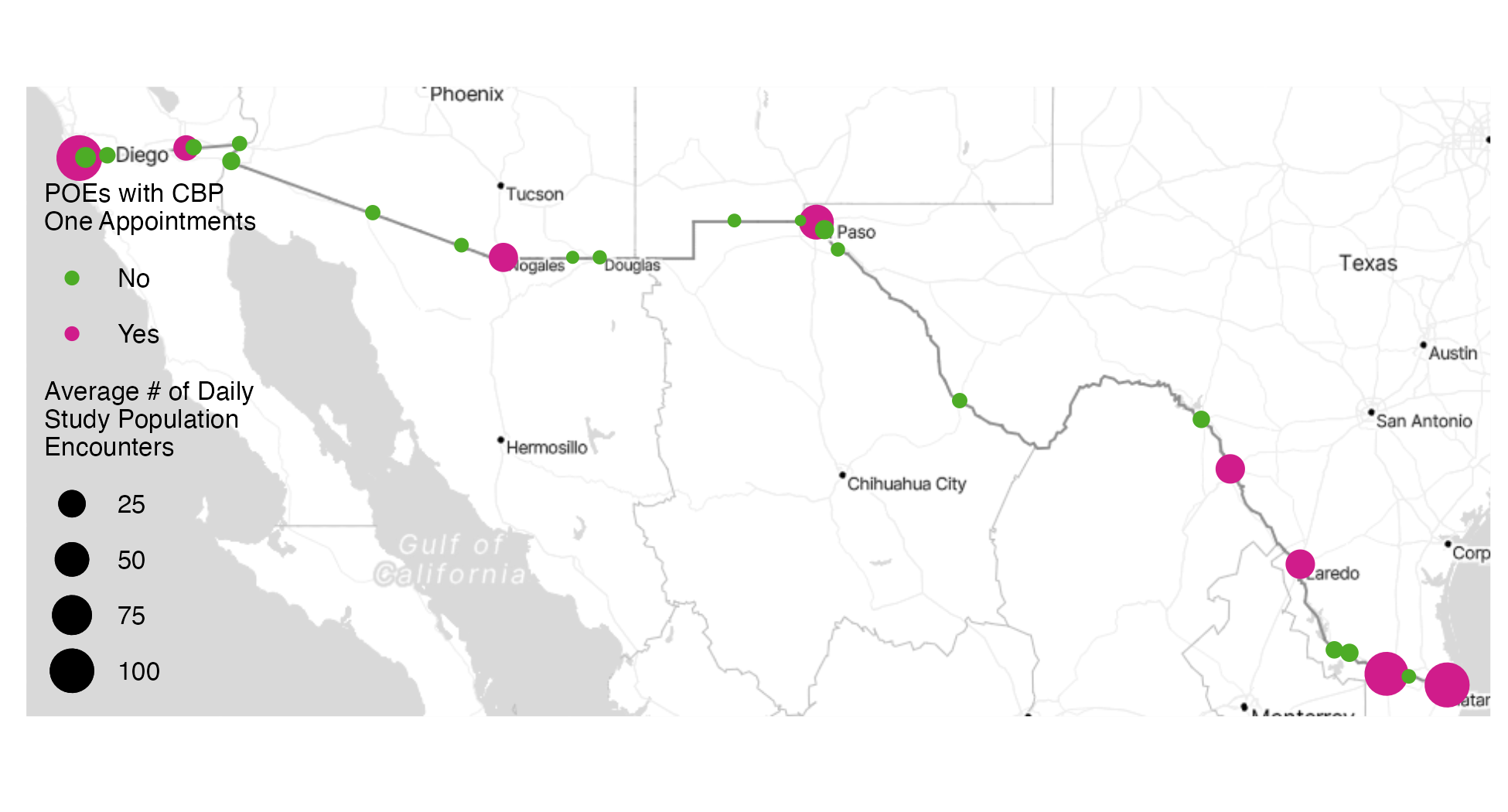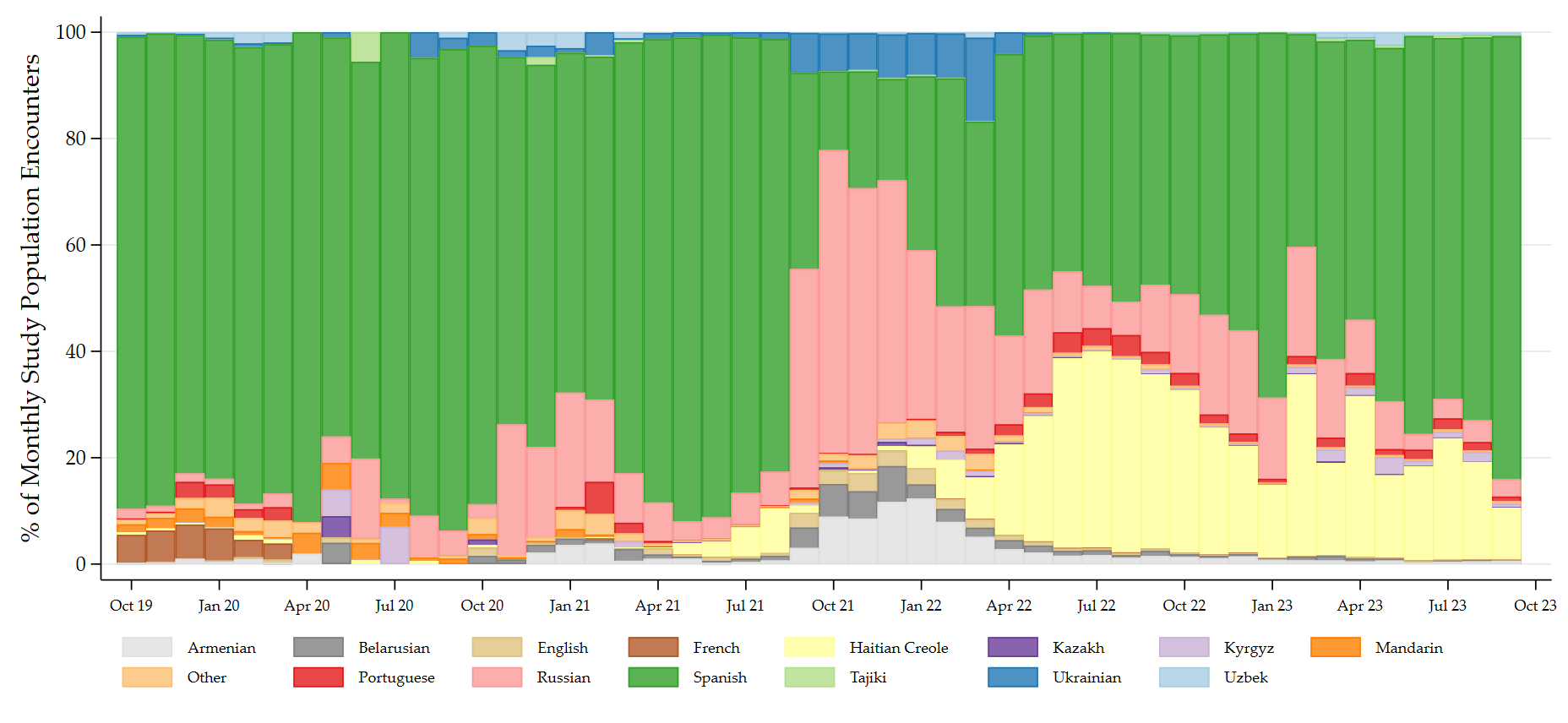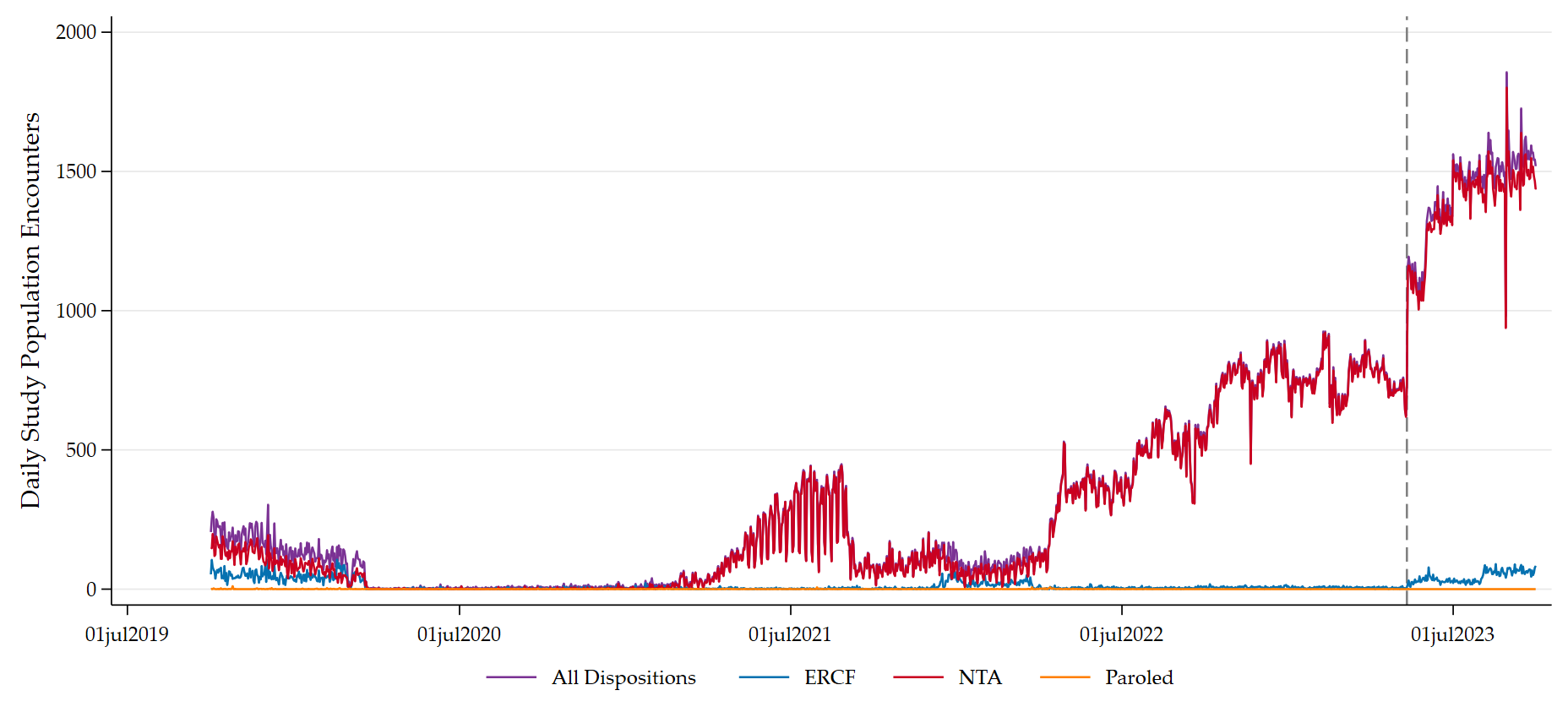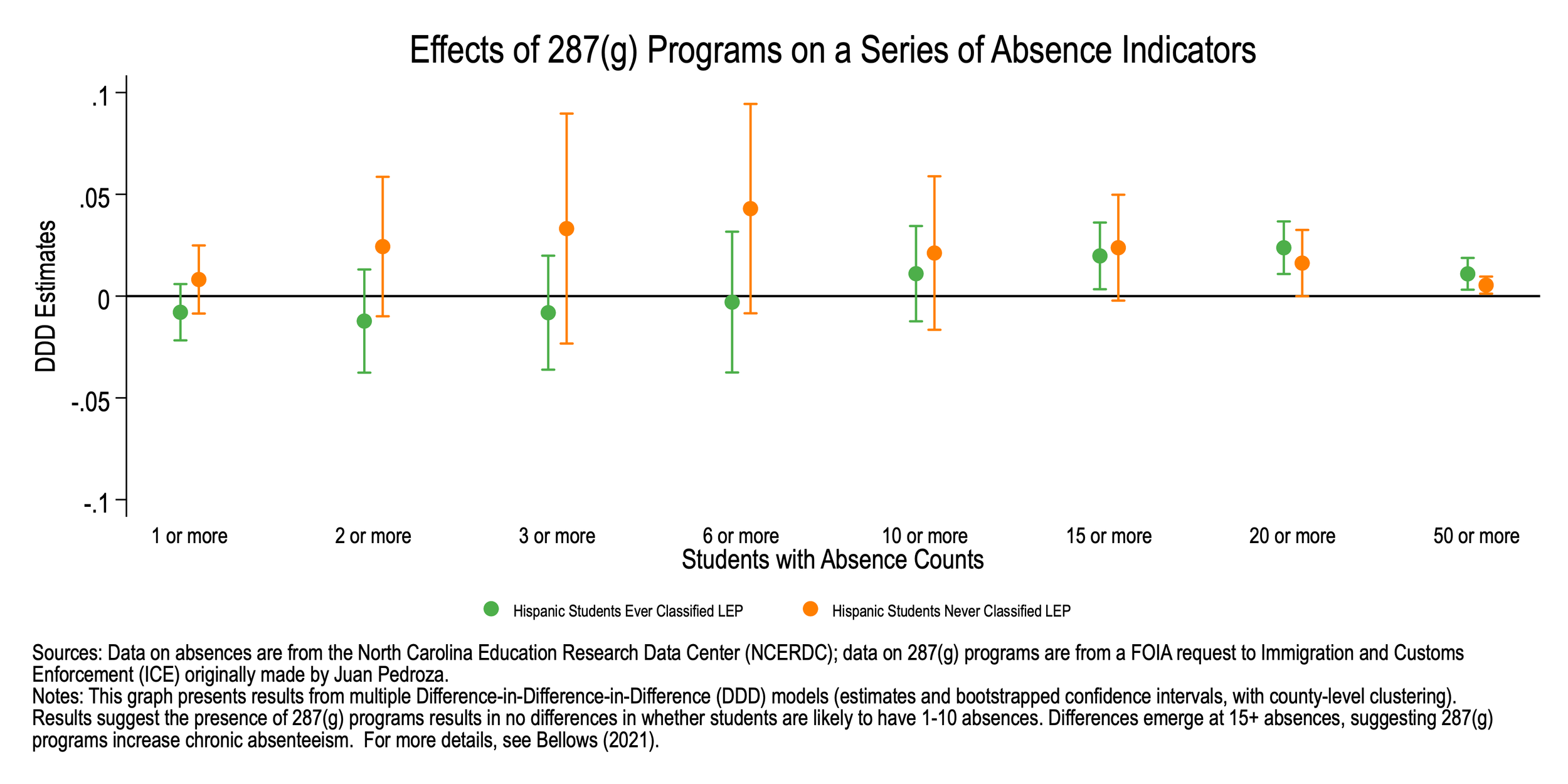U.S. Immigration Policy
For information on my work on refugee households, please see my research on the U.S. social safety net.
Processing Asylum Seekers at Ports of Entry
The number of individuals seeking asylum at southwest ports of entry has increased substantially in the past five years, which has stressed Department of Homeland Security’s (DHS) U.S. Customs and Border Protection (CBP) capacities. I was part of a team examining asylum processing at Ports of Entry (POEs), as directed by Title II of House Report 117-87, Department of Homeland Security Appropriations Bill, 2022. We find that CBP’s ability to process asylum seekers at POEs is constrained by variability in individual case characteristics, infrastructure and equipment, operational demands, and the capacity of other agencies (e.g., U.S. Immigration and Customs Enforcement, U.S. Department of Health and Human Services, and U.S. Citizenship and Immigration Services).
Figure. All Office of Field Operations (OFO) Border Enforcement Encounters, Daily, FY 2020-FY 2023
Source. CBP Data Warehouse as of November 1, 2023
Notes. The dashed line represents the lifting of Title 42 and beginning of CBP One in May 2023.
As part of this project, I conducted a descriptive analysis of asylum seekers at POEs, using data from CBP. Along with the increase in likely asylum seekers over this period, I note increases in the variety of countries (and likely languages) of asylum seekers. I find that, after the introduction of CBP One, most encounters at POEs were CBP appointments. I also find that, as more and more individuals seek entry at the southwest border, most are issued Notices to Appear (NTAs). This suggests that CBP has reached processing capacity.



Immigration Enforcement and Child OUtcomes
Compared to the number of immigrants removed from the U.S. interior in the early 2000s, between 2008 and 2011, nearly twice as many immigrants were removed from the U.S. interior per year. The foundation of my research in this area is the premise that immigration enforcement affects not only immigrants but also their families. The Pew Hispanic Center estimates that 5.1 million children living in the U.S. have at least one unauthorized parent, who is potentially a target of immigration enforcement. Although not all children with an unauthorized parent experience a parental removal due to immigration enforcement, the larger group of children with an unauthorized parent likely experience increases in stress and fear as immigration enforcement intensifies.
I use quasi-experimental methods to isolate the effects of immigration enforcement on children's academic outcomes, examining this question in two ways:
To examine the effects of immigration enforcement on county-level outcomes, I use the staggered rollout of Secure Communities, a biometric sharing program ultimately activated in every U.S. county. I match information on Secure Communities with newly available measures of average county achievement from the Stanford Education Data Archives (SEDA). I find that the activation of Secure Communities was associated with decreases in average achievement for Hispanic students in English Language Arts (ELA), as well as black students in ELA and math. Similarly, I find that increases in removals are associated with decreases in achievement for Hispanic and black students. I note that the timing of rollout is potentially correlated with other county trends affecting results. This paper has been published in AERA Open.
To examine the effects of immigration enforcement on individual-level outcomes, I use 2003-2004 through 2012-2013 individual-level student data from North Carolina. As the source of variation, I use applications for 287(g) programs, which are partnerships between local law enforcement and ICE. In North Carolina, nine counties established 287(g) programs, whereas another 15 counties applied to participate. I use a triple difference strategy in which I compare educational outcomes for different groups of students in these two sets of counties before and after activation of 287(g) programs. I find that the activation of 287(g) programs decreases school engagement by decreasing attendance for Hispanic students. This effect is concentrated at the top of the distribution, increasing chronic absenteeism (missing 15 or more days per year). In contrast, I observe no effect of 287(g) programs on achievement. This paper has been published in AERA Open.



